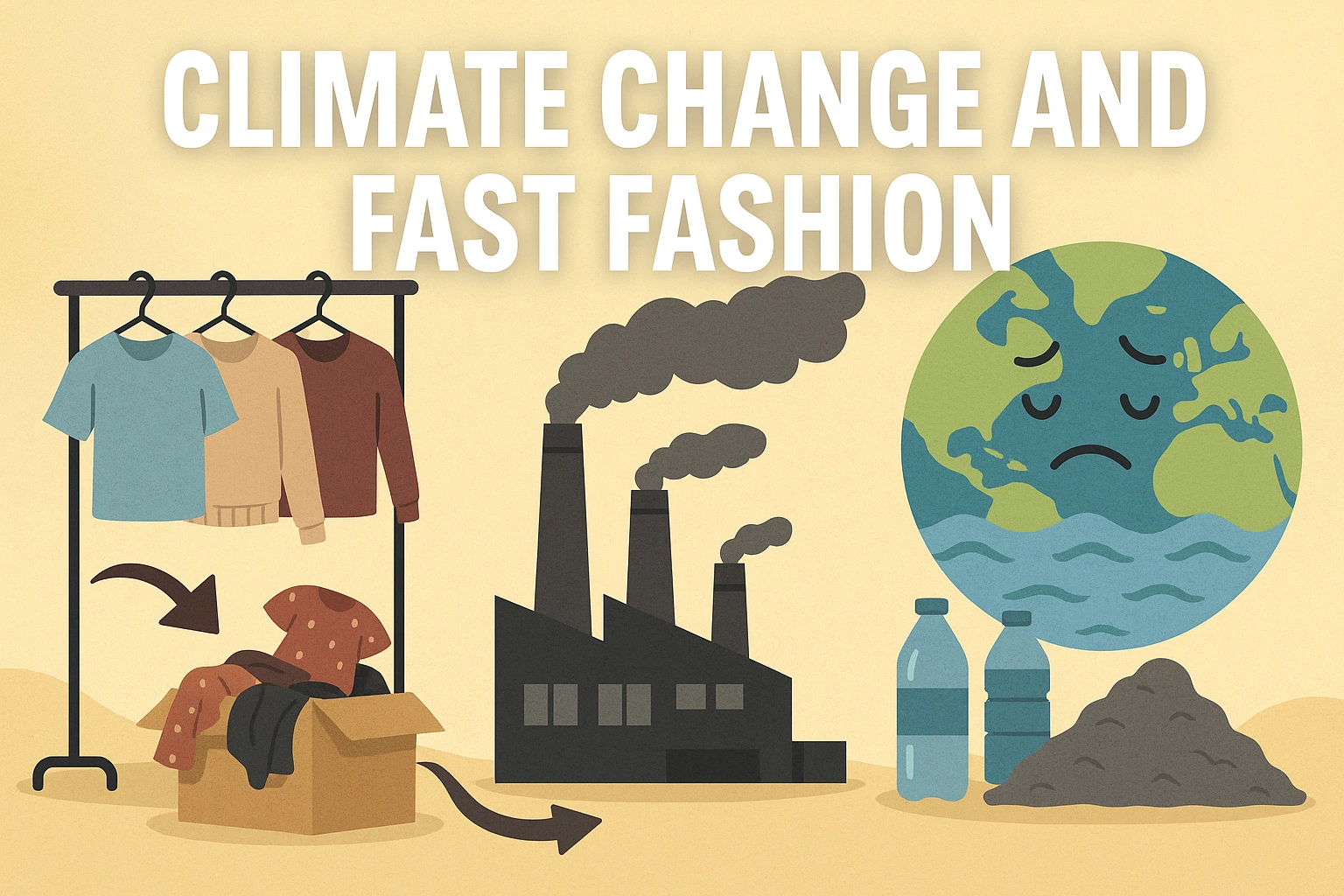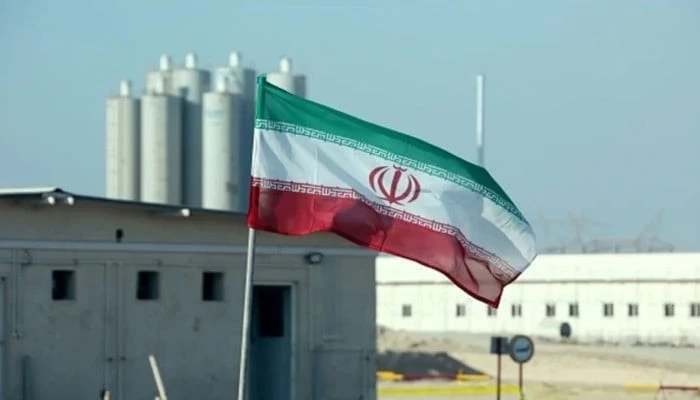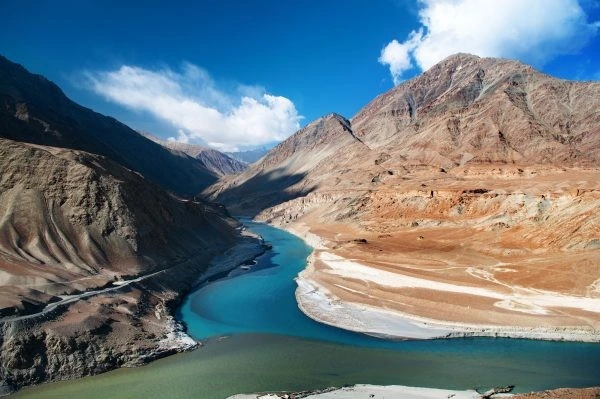Climate change and Fast Fashion

In terms of environmental damage, the textile business, specifically fast fashion, is one of the greatest contributors to climate change. Fast fashion is the term used to describe the quick creation of stylish, affordable apparel that pushes buyers to buy new things frequently, frequently at the sacrifice of longevity and quality. Fast fashion incentivizes cheap, trendy clothing, regardless of the negative effects on the planet caused by mass production and mass consumption. Carbon emissions released into our atmosphere, massive amounts of water for production, toxins dumped into our waterways because of production, and piles of rubbish in landfills are only a few examples of the massive and evident environmental price people pay for this industry. Fast fashion has a strong and complex influence on climate change, contributing to environmental deterioration in several ways. The way that consumers’ affordable, fashionable clothing is produced and consumed has a negative impact on the environment. (Grainger, 2024)
Firstly, the majority of textile and apparel production is done in Global South nations like Bangladesh, China, and India, which mainly rely on fossil fuels for their power needs. As a result, each piece of clothing produced has a larger carbon footprint. The multi-regional ecologically extended input-output model developed by Peters et al. (2011) to examine the climatic effects of fast fashion, apparel, and footwear consumption shows that GHG increased by 23% between 2000 and 2015. As trends change overnight so that increases the manufacturing of clothes resulting in more carbon emission due to over production and over waste of clothes. (Walter Leal Filho, 2022) Secondly, disposable culture is encouraged by the introduction of fast fashion, which can be defined by quick manufacturing cycles and trend changes.
Consumers are encouraged by this culture to throw away clothing regularly, which increases the amount of textile waste produced. The prevalent “take, make, dispose” linear approach puts additional stress on ecosystems and increases environmental deterioration. Resource depletion is a result of the fashion industry’s demand for raw materials, such as petrochemical-based synthetic fabrics and water-intensive crops like cotton. The apparel sector is predicted to use 93 billion metric tons of pure water yearly. Even natural textiles like cotton need a staggering amount of water. Every kilogram of cotton needed to make a pair of pants uses between 7,500 and 10,000 gallons of water to produce. By contrast, this is the volume of water an individual would consume in a decade. (Sassaman, 2023) The textile sector uses a lot of water, which strains water supplies and pollutes waterways. When harmful chemicals are released into water bodies and excessive amounts of water are used for cultivation and dyeing, pollution results and ecosystems are harmed. The speed of fashion cycles has led to an immense amount of textile waste. Many of these wastes wind up in landfills, where hazardous materials are released into the environment as synthetic fibers take generations to break down. An excess of textile waste raises environmental stress and depletes precious land resources. (Bansal, 2024) Additionally, wide-ranging effect may result from waste that is generated by fast fashion such as global warming that results from the emission of greenhouse gases into the atmosphere.
Moreover, getting rid of textile waste is a big problem. Clothing that is unsold or cannot be recycled is frequently disposed of in landfills, where non-biodegradable materials build up and worsen the environment. In addition to dyeing and finishing, fast fashion frequently uses hazardous chemicals that contaminate soil and water, endangering both human health and the environment. (Bansal, 2024).
Historically, fur coats and bags have become a symbol of class. People boost their social status by buying and wearing fur. The process of fur production is very complicated, including intensive farming, aiming maximum output through land, capital and technology. The ecological impact of 1 kilo gram of mink fur (309.91 kg CO2-eq) is 31 times higher compared to cotton, 26 times greater compared to acrylic, and 25 times greater than polyester. Fox fur and raccoon dogs also have great climate impact, approximately 23 times worse for the climate than cotton, and 18 times worse for the climate than polyester. More than 30,000 gallons of water are required for every kilogram of fur produced. The three furs need, on average, five times as much water as cotton, 104 times more than acrylic, and 91 times more than polyester. The amount of water pollution caused by the production of all three fur kinds is astounding; mink fur generates over 400 times as much water pollution per kilogram of polyester, and on average, all three furs contaminate water a hundred times more often than cotton and 75 times more often than acrylic… (Release, 2023) Furthermore, the farming practices in producing leather another important fabric used in the fashion industry, have also been closely examined. Cattle rearing for leather production requires vast land, leading to deforestation and habitat destruction. Additionally, toxic chemicals like tannery waste are used in the manufacturing of leather, which may pollute water. (Bansal, 2024)
Fast fashion is not only a trend, but also a massive driver of climate change and environmental destruction. From excessive carbon emissions to water consumption, disposal of toxic waste, and lack of sustainable crops, the environmental price we pay is staggering. Fast fashion is prioritized over sustainability, and we are headed towards continued irreversible destruction to our planet. It’s time to accept responsibility and cut down on excessive consumption. There is no need to buy more things, anything we need is already here. Many Climate activists are working for this cause, but we all need to work together. Every living creature calls this world their homes. Being human, it is our responsibility to protect our home not just for ourselves but also for all species living on the earth or under water. It is good to see that thrifting culture is being promoted. Instead of throwing clothes in water or fields we should give them to less fortune ones or recycle them.
References
Bansal, J. S. (2024). The impact of the fashion industry on the climate and ecology. World Journal of Advanced Research and Reviews, 211.
Grainger, H. (2024). Environmental Impact of Fast Fashion: Analyzing its Contribution to Climate Change and Sustainability Challenges. Journal of Fashion Technology & Textile Engineering, 1-1.
Release, P. (2023). Fur’s Dirty Footprint. London: Humane World For Animals.
Sassaman, C. (2023). Fast Fashion: The Trendy Environmental Disaster. IU Libraries Journals, 41.
Walter Leal Filho, P. P. (2022). An overview of the contribution of the textiles sector to climate change. Frontiers , 02.













